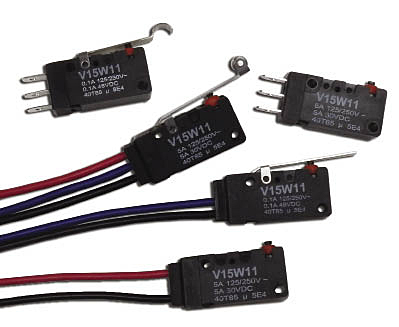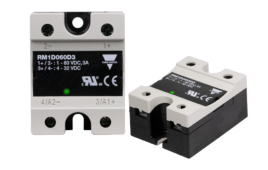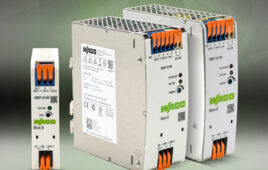High-quality switch components can enhance your design and reduce the likelihood of product failure. When considering a switch, it’s a good idea to verify materials and construction. You should also check for potential weaknesses or flaws that might cause failure. The components should deliver the
best value for your end product.

Honeywell’s MicroSwitch Basic Switch line is expanded with the addition of the V15W series of watertight miniature switches. The new products can be used in a range of high-current consumer and industrial applications where dust, spillage, or water could be a factor.
To compare switches, it is important to look at specific areas. From the outside, many switches look alike. Therefore, open up the housing and look at the number of parts and how they are fixed in the case. Examine what materials are used for the parts and what functions they must perform. Do the parts appear robust or flimsy?
A superior switch case is thicker and contains a high level of glass filler to make it less susceptible to cracking or breaking. Most switch cases are plastic and should have less than 50% regrind. Switch cases made from 100% regrind typically do not tolerate harsh operating conditions or high cycle rates and may have lower melting points and poor heat dissipation. They can form cracks and fissures more easily and be more susceptible to failure. If case fissures allow enough moisture into the case to interfere with electrical conductivity, the switch might work intermittently. Also, verify that product specifications and tolerances match published data.
Another recommendation is to check the plating of the common terminal, connecting terminals, and leaf spring. Silver plating dissipates heat well. Gold plating prevents corrosion in low current switching applications. If the terminals and leaf spring seem flimsy, this can affect the number of cycles before failure. A switch in a hedge trimmer, for instance, may only be actuated 1,000 times during the product’s life. However, a switch in a computer game joystick could see tens of thousands actuations. Thus, it is a good practice to specify a switch with a higher cycle life than you anticipate it will see in your final application.
Next, look at the inside cover. It should have locator pins to align the body to the cover and keep all the components in sync to deliver consistent operation. Switches without alignment pins typically use two bosses that serve as the main locator guides for the cover and body. Locator pins hold all the components in place for consistent out-of-the-box repeatability. Bosses create mounting holes. Because there is no other stabilizing component, the case and components can skew if the switch is over-torqued. This could effect electrical continuity and the actuation of the plunger by changing both the physical and electrical characteristics of the switch.
Make note if the bosses serve as a cover-to-base alignment mechanism and act as mounting holes. Bosses that must multitask may be more susceptible to change from a mounting screw tongue. You should pay attention for multi-functioning parts in a precision switch. Doubling up on component functions usually means a part cannot do one thing exceptionally well – it does two things marginally.
Lastly, the difference between a high and a mediocre quality switch is usually just a few cents. Don’t be fooled into shopping percentages on pennies. A $0.20 switch is 11% more than a $0.18 switch, but if two cents might eliminate a recall or field failure, it may be worth it. Think of total cost over the life of the switch, and that includes cost of failures not just the cost of the component. Do not expect to buy a commodity-priced switch and expect it to perform like a higher-priced one.
Honeywell
www.honeywell.com
::Design World::
Filed Under: SENSORS, TEST & MEASUREMENT, ELECTRONICS • ELECTRICAL, Switches





Tell Us What You Think!